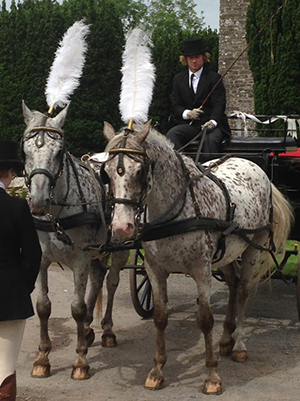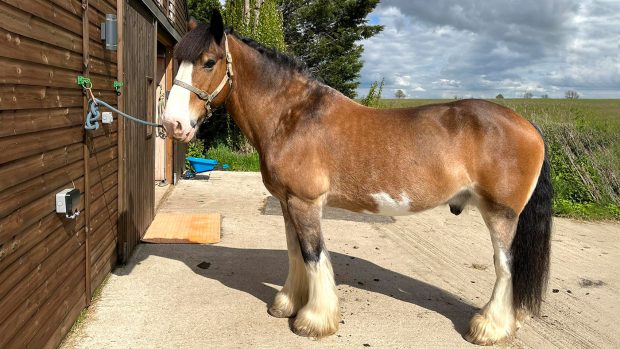Having returned from an absolutely amazing wedding in Wales and fantastic honeymoon in Italy, it’s back to my busy normal life and back to work. I’m certainly not complaining, I love my work and have had a very interesting past week treating lots of lovely human and horse clients. Gem, my pony has had a lovely fortnight off and has a newly formed ‘belly’ to show for it!
I am hoping that this blog will encourage you to read up on a little bit of anatomy, be it human and/or horse. I must sound like such a geek, but I find anatomy amazing! I’m sure most people yawn at the thought of it but don’t close the screen down yet…
Consider that the way in which we are built is fundamental to the way we move and how we function (biomechanics) – the same is true of our horses. Without thinking about this and understanding it a little, how can we really appreciate the way in which we and our horses move? And if we can’t do that, then how can we improve things?
Interestingly, horse and human anatomy is not as different as you might think….

Key : S=Shoulder, E=Elbow, W=Wrist, H=Hip, K=Knee, A=Ankle
Yes the horse has bigger bones with different proportions, but generally we are actually pretty similar. Putting it simply, we both have bones to keep us upright, joints to allow movement, muscles to move the joints and an intricate nervous system controlling the whole process.
Once fully grown and when all growth plates are fused, the horse has on average 205 bones whereas us humans have on average 206. Horses have more vertebrae than we do but their function is very much the same – to protect the spinal cord, to provide stability and also to provide attachment sites for muscles so that we can move.
The horse’s rib cage connects to the thoracic vertebrae as ours does. This is important for many physiological functions; perhaps most importantly, protection of vital organs and in supporting expansion of the lungs for breathing. In the horse, this is where we sit and thus the ribcage and surrounding musculature also provide the spine with stability. The horse’s spine is not only able to support their huge abdominal contents pulling downward, but also an extra downward force from above i.e. the rider.
Both human and equine research discusses the role of the core muscles in improving spinal stability, postural improvements and prevention of back pain. Physiotherapists are able to assess the strength of these core muscles and advise on how and where improvements can be made.
Obviously we both have four limbs, yet humans have adapted with evolution to be able to use their upper limbs for dexterity, whereas the horse’s forelimbs (equivalent of our arms) actually bear the majority of their weight; when grazing this is approximately 60% of their body mass.
The anatomy of the horse’s shoulder is very much like ours but there is a fundamental difference – they do not have a clavicle (a collar bone). This means that the horse’s forelimb has no bony attachment to the rest of the skeleton and is held in place purely by muscle and soft tissue. Horses therefore have the potential for huge range of movement at the shoulder – just look at the likes of a galloping racehorse or Valegro in his extended trot (below)! He would not be able to that if he had a collarbone. The reason for this is evolutional – horses are prey animals and need to be able to run away fast from predators, whereas we need greater proximal support of our arms for dexterity.

Our legs and the horse’s hind limbs are also very similar; we both have a hip, knee and an ankle joint – known as the coxofemoral joint, the stifle and tarsus in the horse. What you might consider as the horse’s knee in the forelimb, the horse’s ‘carpus’ is actually (in anatomy terms) more comparative to a human wrist.
The horse’s knee joint is their stifle. The stifle has a patella (knee cap) just like we do and provides an attachment site for the very powerful quadriceps muscle group. Weakness in this muscle group can cause a variety of problems, one of which in the horse can be ‘locking stifle’. Following veterinary referral, physiotherapists can support rehabilitation from this condition.
The hind limb of the horse is their powerhouse! It’s what drives them forwards and it is why you will hear instructors and riders wanting to ‘engage the hind limb’. Ultimately the goal is to engage the powerful muscles of the hind limb as efficiently and effectively as possible to provide power, speed, elevation and jumping ability for example.
This power and energy would be pretty much useless without the pelvis. The horse’s pelvis like ours comprises three bones; the ilium, ischium and pubis and connects with the sacrum via the sacroiliac joint. The sacroiliac joint has very little movement in both the human and horse. This is because it is required to bear the weight of the torso in humans and, in horses needs to be strong and rigid enough to allow transmission of force from the hind limb.
 Horses have generally been domesticated to have one of two jobs, which are either to pull a load or to carry a rider. This is where anatomy gets interesting as despite the fundamentals being very much the same from horse to horse, conformation, size, shape and therefore ability to function is very different – look at the difference between a Cleveland bay and a thoroughbred for example. We are now getting into the realms of biomechanics and I will save that and more specific anatomy for future blogs…
Horses have generally been domesticated to have one of two jobs, which are either to pull a load or to carry a rider. This is where anatomy gets interesting as despite the fundamentals being very much the same from horse to horse, conformation, size, shape and therefore ability to function is very different – look at the difference between a Cleveland bay and a thoroughbred for example. We are now getting into the realms of biomechanics and I will save that and more specific anatomy for future blogs…
On a finishing note, pictured right are the two beautiful appaloosa driving horses that we had at our wedding. I certainly wasn’t thinking about anatomy and biomechanics, but on reflection, it’s amazing that they could pull a carriage with the weight of four people as gracefully as they did! Horses really are incredible creatures!
Nina




